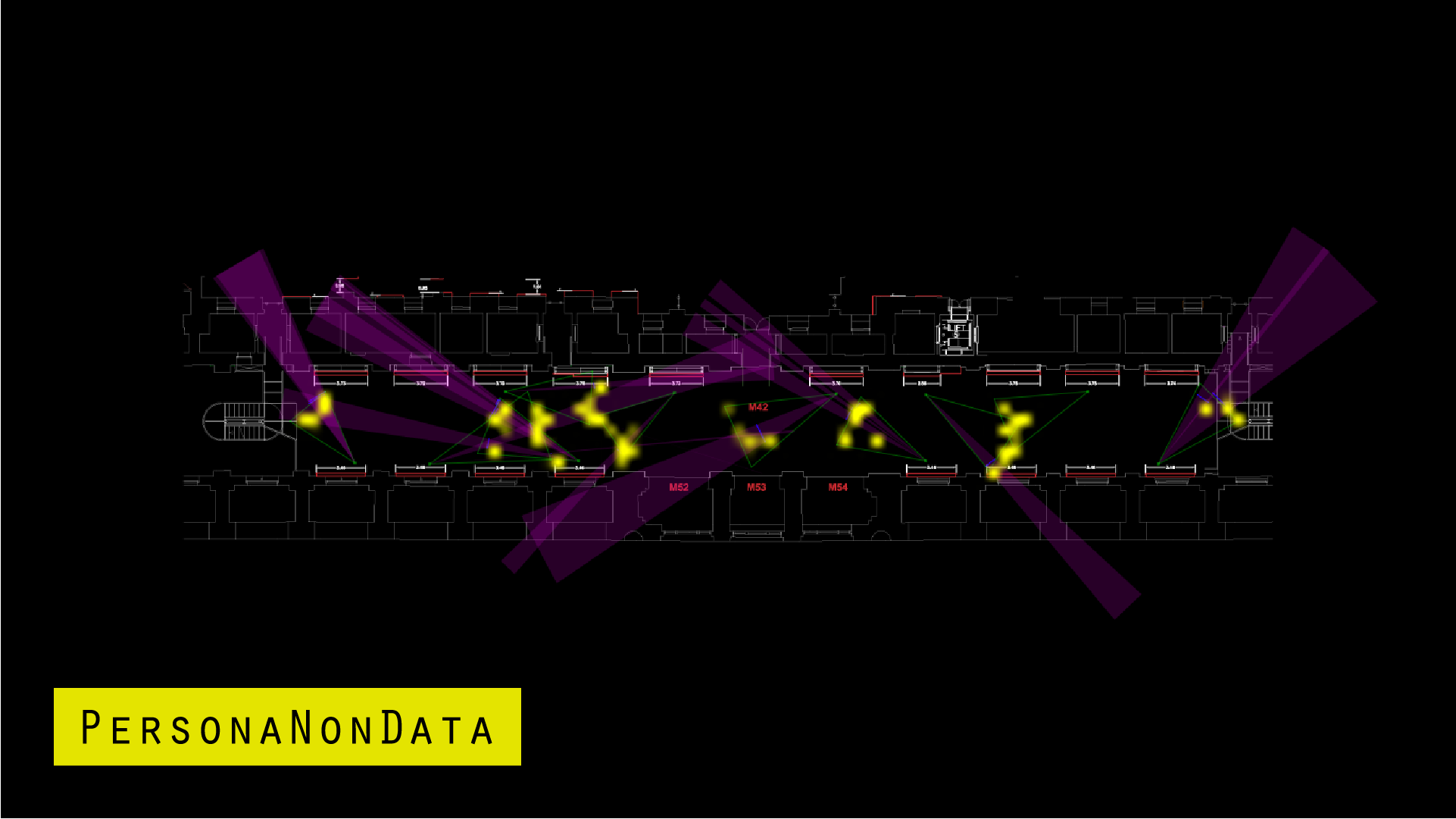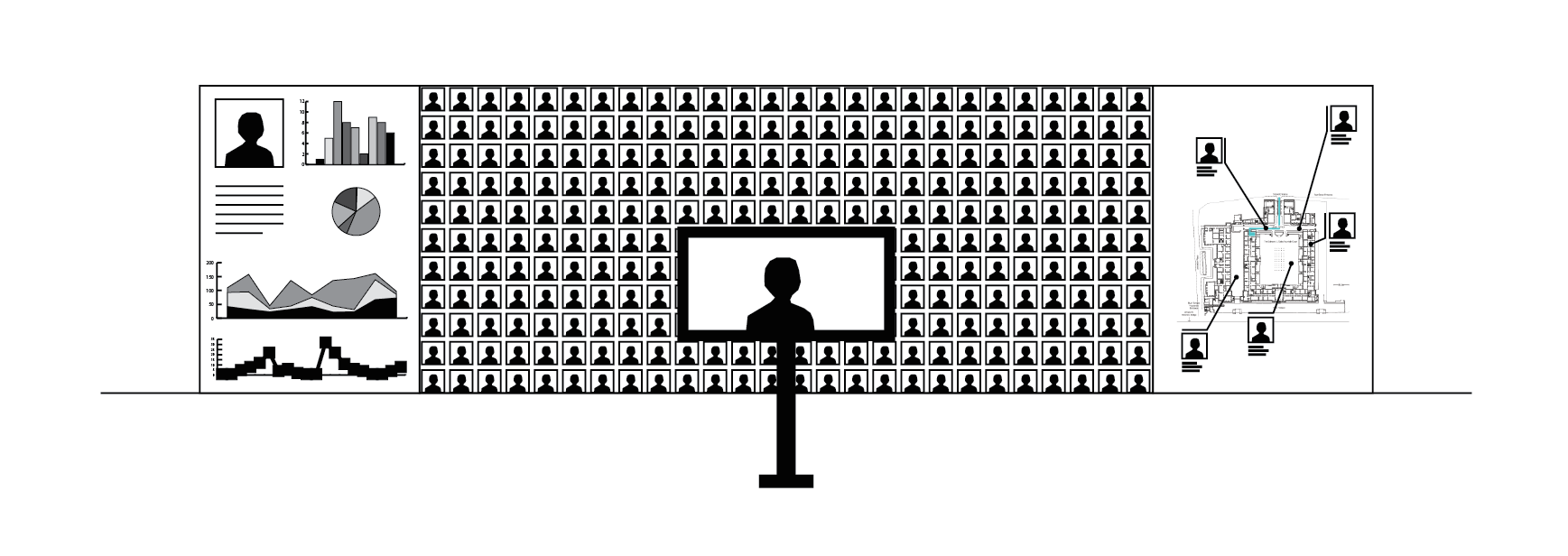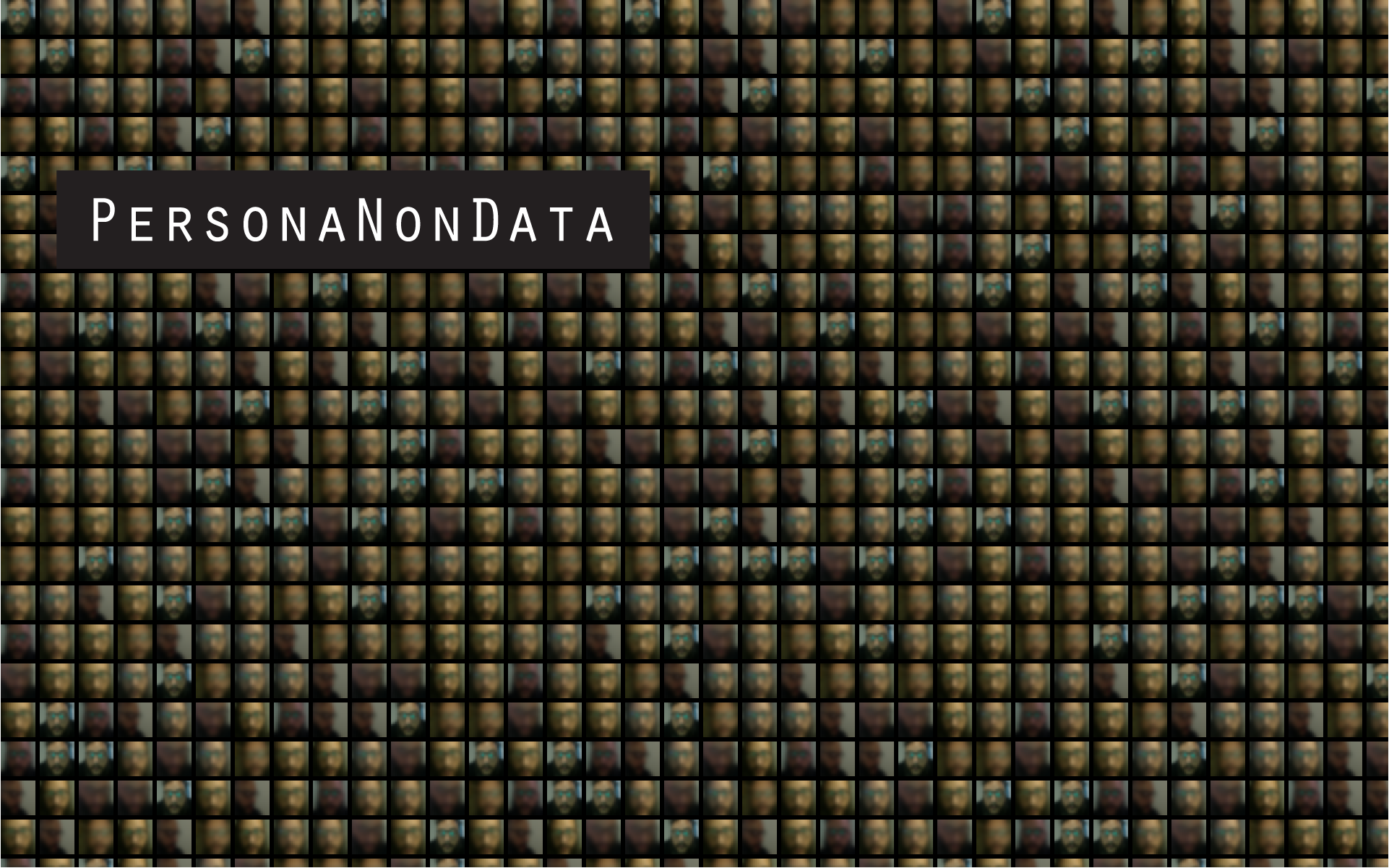From the 4th February visitors to Big Bang Data will have the opportunity to experience Persona Non Data, an interactive installation.

We caught up with creators of Persona Non Data, Salvatore Iaconesi and Oriana Persico. How would you describe the type of work and projects that you create with the collective Art is Open Source?
Our works come under the form of ecosystems, platforms for expression in which multiple voices – which make the complexity of our world – can emerge: we are just one of this voices. For us an artwork is an environment in which the mutation of human beings and society become perceivable: hidden mechanisms reveal themselves to participants; social, political, technical codes are transgressed to create the necessary space for innovation. As they become perceivable, tools are provided for people to be able to perform. We do so by embracing radically open approaches, on top of which we establish relations (between us and any form of otherness).
 How do you plan to turn the exhibition space at Big Bang Data into a data generator? How will visitors experience and contribute to the work?
How do you plan to turn the exhibition space at Big Bang Data into a data generator? How will visitors experience and contribute to the work?
Persona Non Data is a sort of meta-exhibit: people interact with it by visiting the spaces of the whole Big Bang Data exhibit and, by doing that, they generate data which is captured and visualised.
Visitors interact with Persona Non Data as soon as they enter. They move through the exhibition space, pause, stand in front of the artworks, pick up a message, chat with their friends and, by doing all of these things, they generate data, which is captured using the CCTV cameras, the wifi, social networks. It’s like when you walk in the street and our faces, bodies, movements, actions and behaviours are constantly captured and transformed into digital data, even if we don’t realise it. Like in the “real world” out there, people can’t really “choose” to contribute or not in the first place: they do so just because they are there. But unlike the real world, where you are not asked for your opinion – and most of the time you don’t even know you are being captured and analyzed–, in Persona Non Data you can express yourself about how your data is used, you are fully aware of what is happening and you can make choices about it.
This is how we transform a cultural institution – in this case, an exhibition space – into a data generator: take all of the data we generate in our daily actions, whether we want/know it or not, put it in front of people and ask them how and if they’d like it to be shared, and then turn it into an usable source of information and knowledge, to be used by people and the cultural institution itself, instead of being hidden and available only to a few – usually large – operators.
The results will be displayed in digital visualisations at the end of exhibition. What do you think are the challenges in visualising and communicating the data from Persona Non Data?
Visualising large amounts of data is always a challenge. Data visualisation has almost reached the status of an autonomous media: it’s like a new television. In a way it’s very “passive”, in a way, even in its interactivity. Not many people know how to handle vast sets of data, or how to make sense of them. What happens is that people are placed in front of all these beautiful visualisations and they don’t really understand anything about the process, or what the data they are seeing actually means to them.
Even more, they have this impression of experiencing some “truth”, some objectivity. Data is not objective and it doesn’t represent “truth”, even if it looks like it: if you change the purpose, modalities, parameters with which you collect data, you get different data. you could observe the same phenomenon in two different ways and get two different datasets, even in complete disagreement with one another.
For this: how can data, or its visualisation, be “true”? It is not, in fact. It’s just an interpretation among the many, beautiful or insightful that it is. And visualising data is a responsibility: because you may risk communicating to people that you are visualising the “truth”, and instead you are not, because you are communicating an opinion, a point of view. This is very similar to what happens on TV. It was (and still is) a very passive, subjugating experience: some experts choosing content for you, points of view and the “parameters” of what you see, and then present it to you, in ways which are pleasing to the senses. This looks a lot like what data visualisation is today.
We confront with that by supporting people in becoming the performers of data, not the subjects. We don’t really focus on visualising data, but, rather, we put a lot of effort in its existence, meanings and usability, avoid to just merely experiencing data (visualisations), and dealing with it, actively creating our own points of view, perspectives, parameters, and how to make sense of them, also in the context of society. All of our action and artistic intent is dedicated to this: awareness and empowerment. In this sense, we say that the most important part of the artwork is not the visualisation, but the workshop, as well as the many hints about this sense of “doubt” and of “possibility” which are disseminated across our work.

What does the project aim to highlight to audiences about their own data and privacy?
We try to activate people in order for them to become performers of their data. This, of course, has enormous implications on privacy and surveillance. Persona Non Data should raise awareness about whether you want to be purchased and sold through your data hundreds of times each day, or how the data you produce with every gesture and action is used.
What are the positive and negative implications of data collection?
We try to avoid to describe reality in terms of positive/negative terms, as something can be positive and negative depending on “who” you are, and on the context. Points of view tend to radically change if you are Google, Facebook, the secret service, a mayor, an activist a journalist, a citizen, a child and so on. This raises questions such as: Who produces data? Who collects the data, and for what purpose? Who benefits from the collected data? What are the parameters which are used to analyse the data? Who choose these parameters? Can I have a say about the whole process, at least when/if it concerns me, or “us”, our environment, relations, identities, rights, behaviours? In short: it is not really important what we think, it is important to understand how people can form their own point of view, and how they can act according to it.
Are people aware of how much data they share during their daily lives?
This is a major issue and again it concerns culture. In centuries of civilisation we have built laws, systems, languages, values, signs (in a word: cultures) which make us able to “read” society and (more or less) consciously choose our behaviours. Compared to that we landed in the “digital” realm a few seconds ago, and everything is constant change: operating systems, platforms, terms of services, devices. In this age of constant flow and transformation, it is nearly impossible for anyone to really know much about themselves, and to make sense of it. Today, it is impossible for anyone to know what and how much data they generate.
On top of that, the action of algorithms, going through all the enormous amounts of data we generate each day, to try to find patterns, recurrences, and in a word, the meaning of this data, is another strong characteristic of our time: this kind of action is completely opaque and obscure, and has enormous implications, ranging from what I see or don’t see on my Facebook timeline, to whether I will be considered suitable for a job, or for health insurance, or if I will find a partner or not, or who will win the elections next year.
What most excites you about working with data?
Data is part of everyday life. You turn on a light on in your flat, you buy a tomato at the supermarkets, you walk along a sidewalk and, somewhere, a line in a database changes. “Data is everywhere” is not rhetorics, it is a concrete, pervasive condition we can’t simply ignore. Any art is necessarily “contemporary” to its own time: as contemporary human beings and artists we observe the world we live in, and we are interested in people’s mutation and differences. All of it, now, consistently includes data.
Persona Non Data is brought to you by Art is Open Source artists, Salvatore Iaconesi and Oriana Persico, supported by King’s College Cultural Institute with the academic lead of Dr. Mark Coté.